NULL) Primary Key Class_Num
Consider the Information Engineering diagram shown in the exhibit. Which DBDL definition best describes this diagram?

In which phase of database design do you identify entities, attribute domains, and relationships?
Which statement best describes a procedural data manipulation language command?
Consider the following SQL statement and the Orders relation shown in the exhibit:
What is the output of this SQL statement?
SELECT *
FROM Orders
WHERE NOT (Amount < 1000
AND Sales_Rep_No = 210);
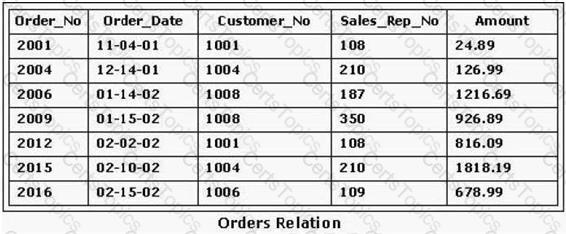
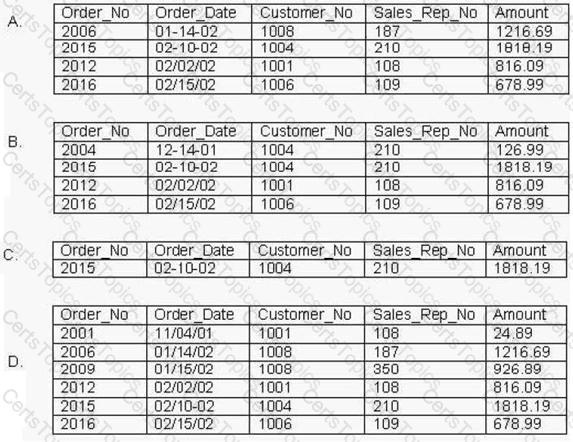
A theta-join can be viewed as:
What is the highest normal form of the relation(s) shown in the exhibit?
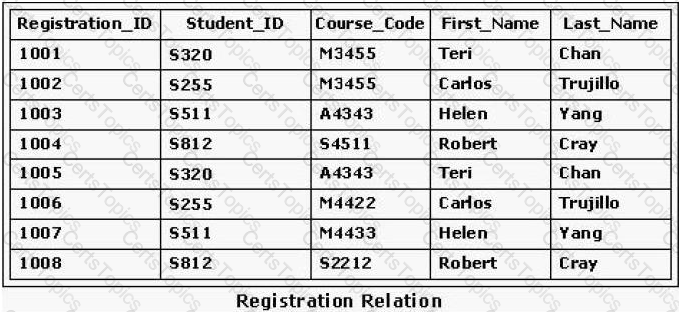
Your company must choose which type of database to use for a new project. Which of the following lists three characteristics of file-based database systems?
What is the highest normal form of the relation(s) shown in the exhibit?

Which subset of Structured Query Language (SQL) is used to create and name database entities?
Consider the relations shown in the exhibit. Due to restructuring, the sales department has been eliminated and the employees working in that department have been dismissed. All ID information is stored as integers. Which SQL statement would be used to return a relation with all information for the employees who have been dismissed?
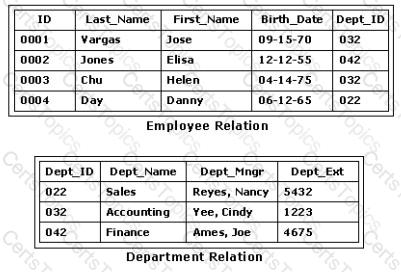
Consider the entity-relationship (ER) diagram shown in the exhibit. What do the characters at the ends of the connecting line indicate?

Consider the following four database design activities:
1 - Design user views.
2 - Select a DBMS.
3 - Apply normalization.
4 - Determine entities.
Which choice shows the correct ordering of these activities, from first to last, by assigned numbers?
Which characteristic is an advantage of a database management system?
Consider the Information Engineering diagram shown in the exhibit for a building management company. Referential integrity must be maintained such that a building cannot be deleted when it has residents. Building_ID, R_ID, Room_Count and Room_Num are integer numbers, whereas Bldg_Name, Location and Res_Name are all represented by variable-length strings with a maximum of 20 characters. Which SQL statement best implements the relations shown in this diagram?

Consider the relations shown in the exhibit. Which of the following SQL statements would enter data from the Customers relation into the Atlanta_Customers relation?
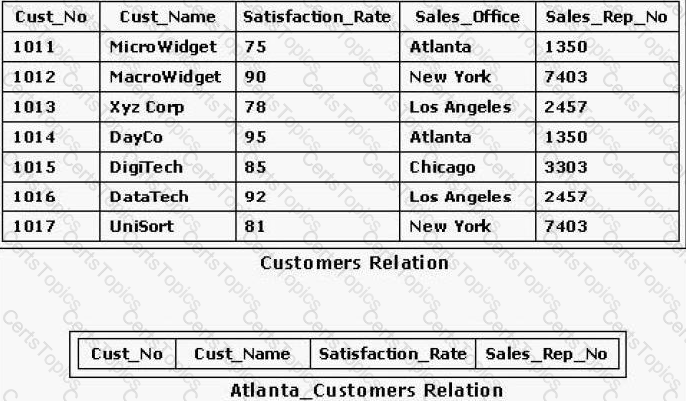
Consider the Employee relation shown in the exhibit. A database manager wants to set up a view called Emp_Dept that allows users to find employees and their department ID numbers. Which SQL statement will accomplish this?
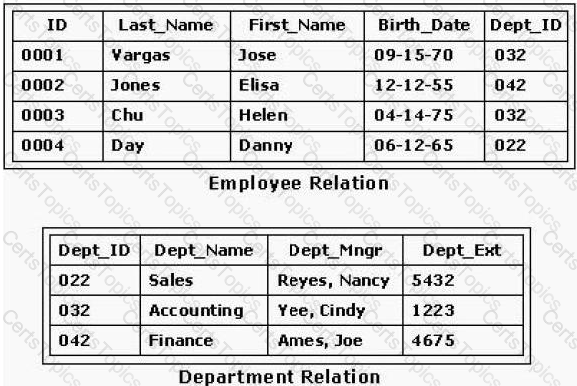
Which three pieces of information did E.F. Codd describe as necessary to retrieve a data value from a relational database?
Which statement best describes a candidate key?